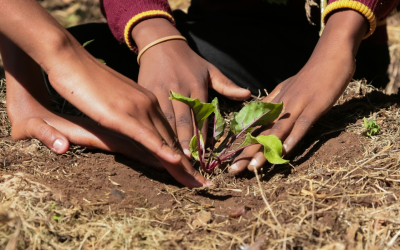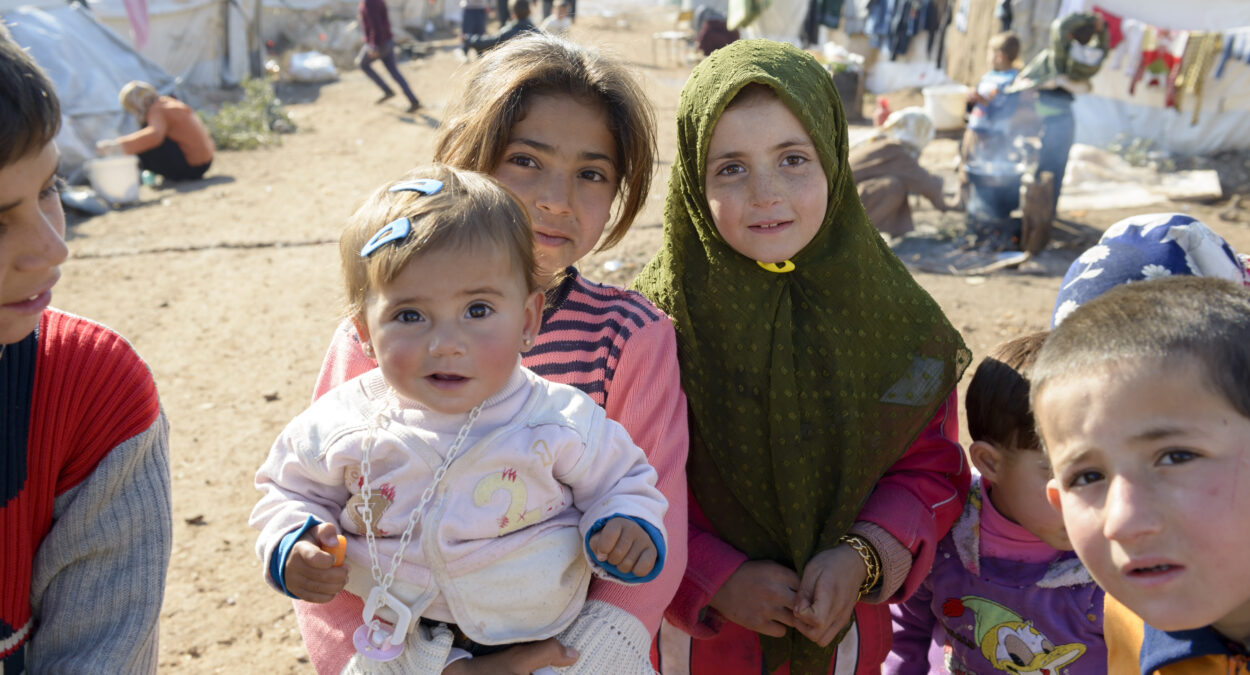CURRENT LIVING CONDITIONS IN SYRIA
SCHOOL
Overall, the illiteracy rate in Syria is around 15%. Nevertheless, the war has lasted so long that a whole generation of children has not experienced regular school education. Around 3.2 million Syrian children lack school prospects in their home country or in the country of refuge. Many girls and boys live in emergency shelters and tents. Schools were destroyed in the war.
In addition, children are recruited for combat missions or join armed groups out of economic need in order to support their families (source: BMZ).
MEDICINE
Most of the health facilities were also destroyed in the war, so that the population is dependent on aid from abroad. Around half of the hospitals in the country have been destroyed or damaged. There is also a shortage of doctors, of whom only 1.5 are available per 1,000 inhabitants. According to Aktion Deutschland hilft, life expectancy in Syria has dropped from 70 to 55 years since the war began.
Water
Safe access to drinking water has been non-existent for almost 12 million people in Syria since the war, as have sanitation and hygiene facilities (source: Oxfam Deutschland). According to BMZ, some people in the country have only 5 litres of water per day at their disposal. This situation has already led to outbreaks of infectious diseases in many places and continues to pose this danger. Due to a lack of oil supplies and an unstable electricity grid, there is no continuous water supply in large parts of the country.
nutrition
According to the World Food Programme (WFP), around 60% of the population will lack access to sufficient food in 2021. They are therefore dependent on the support of foreign NGOs. The number of people suffering from hunger has risen steadily and rapidly in recent years. Malnutrition is also prevalent throughout the refugee camps among children, women and men.

GEOGRAPHY
Syria is located in the Near East and borders Turkey, Jordan, Lebanon and Israel. In addition, the country has a coastal strip of about 212 km.Syria's geography is characterised by desert, fertile coastlines and the Jebel an-Nusariyah mountain range. In addition, the Euphrates River flows through the country for about 600 km, which enables the irrigation of important agricultural land. Nevertheless, climate change is also affecting the agricultural economy in Syria. In rainfed agriculture, important harvests have recently failed due to long periods of drought. At the same time, the country's rivers carry less and less water.
The Syrian coast has a Mediterranean climate with regular rainfall. Towards the interior, the environment is increasingly characterised by drought. Summers are very hot and dry, with temperatures dropping sharply at night. Winters in Syria are also very cold.

HISTORY
Syria's history is marked by foreign rule and constant unrest. In the 19th century, the country belonged to the Ottoman Empire, but then passed to the French.
It was not until 1946 that Syria gained complete independence from France. The French administration had previously divided the country into three states: Damascus, Aleppo and the “Alawite state”. The Drusenbergland and Alexandretta were designated as separate administrative districts. By 1939, all districts were united to form the state of Syria; only Alexandretta was ceded to Turkey.
Already in the 1920s, the nationalist elite had risen up against the occupation and organised itself in the so-called “National Bloc”. This was the only existing and permitted party at that time. This was followed by a Syrian draft constitution in 1928, which mainly included religious freedom for all citizens and sovereign powers for a President. However, France rejected this proposal, which resulted in strikes, election boycotts and demonstrations by the urban Syrian middle class. Afterwards, the Syrian people began to successfully rebel against the occupation, so that France capitulated in 1940. After 6 more years of French mandate administration and the bombing of Damascus by French planes, the UK, the US and the UN increased pressure on the Western Europeans to withdraw from Syria. The last French troops left the country in 1946.
STRONG ECONOMIC GROWTH
In the following years, the country experienced strong economic growth, mainly due to the processing of agricultural products such as grain and cotton. However, only a small part of the population benefited from this upswing, which increased social inequality in the country. At the same time, the country was unsettled by the defeat of the Arab armies against the newly founded neighbouring country of Israel in 1948. Syria became more unstable domestically, so that, after two previous coups in 1949, Colonel Adib al-Shikhekli became President and remained in office until 1954.

POLITICS
Syria has always been politically very closely tied to the socialist states. Thus, in 1958, a group of Syrian officers travelled to Cairo to push through a union between Syria and Egypt: the United Arab Republic (UAR). However, the cooperation did not take place as the Syrians had hoped: Egyptian General Nasser intervened in the Syrian party system instead. Only the Baath Party was still allowed, which pursued (pan-)Arab nationalism. The previously existing Syrian Social Nationalist Party and the Syrian Communist Party were banned. In addition, the state intervened in the country's economic processes; unions were disempowered and land was expropriated.
In January 1961, this was followed by the partial to total nationalisation of banks and insurance companies. The discontent of the Syrian population grew. A military coup ended the membership in the UAR in 1961 and the Syrian Arab Republic was founded – unfortunately with an unsuccessful government formation, so that another military coup followed. The subsequent rulers were from the Baath Party.
However, internal political unrest in 1966 enabled a coup by the party left, which pursued a socialist direction for the country. Air Force Chief Hafiz al-Assad rose to the position of Defence Minister and was able to position the strong military behind him. With the help of this powerful position, he succeeded in arresting the party and state leadership and forming a new government – with himself at its head.
HAFIZ AL-ASSAD 30 YEARS IN OFFICE
Assad was also active in foreign policy, invading Lebanon in 1976 and supporting Iran in its war with Iraq. Syria's economic situation deteriorated sharply at the end of the 1970s, and criticism of the regime grew. From 1979, the Islamic opposition began to fight, especially against the Alawite dominance of Assad's state. The army responded with counter-attacks that cost an estimated 30,000 lives in February 1982 and largely destroyed their old city in the “massacre of Hama”. Assad successfully crushed the Muslim Brotherhood with this attack and then persecuted left-wing opposition members.
The crackdown in Hama was meant to serve as a deterrent to any criticism of the regime – successfully. Although the people of Syria continued to suffer from increasing corruption, deterioration of the economic situation and disregard for civil rights, there were no renewed attempts by opposition parties to take over. Thus, after Assad's death in 2000, his son Bashar was able to take over the presidency unchallenged.
Bashar al-Assad initially came across as more liberal than his father, released some prisoners of war and agreed to sign the Nuclear Non-Proliferation Treaty. However, his military activities in Lebanon did not stop, demonstrators in his own country continued to be imprisoned, and he rejected the stationing of United Nations observation troops on the Syrian-Lebanese border. He also officially declared Israel as an enemy of his country. At the same time, Assad drew closer to Russia, mainly through an oil production deal, and officially opposed the US as an ally of Iran and Venezuela.
Domestically, Bashar holds several elections, which he wins with a majority without exception. The elections as well as a constitutional referendum are considered a farce by international observers.
The Arab Spring also arrived in Syria in 2010 and the first calls for protest were made by opposition members: for political freedom and the overthrow of the government. The Syrian National Council and the Free Syrian Army fought particularly hard. The demonstrations were violently put down. The United Nations condemned the events in Syria as human rights violations and called for an end to the civil war, although the veto powers China and Russia opposed strong language.

ECONOMY
The long war has also severely damaged the economy in the country. In addition, there are sanctions from foreign partner countries, for example in the oil business. Natural gas and oil production are the country's main sources of income.
The Syrian pound has lost around 70% of its value in recent years, and the inflation rate was estimated at 213% in 2013.
There are hardly any current figures on Syria at the moment.
WHAT THREATENS THE PEOPLE OF SYRIA?
The Syrian population is threatened by the unstable political situation above all, which even international measures do not seem to be able to save. The war is eating away at the people, as well as the structures in the country. There is hardly any food and water, medical care is catastrophic, the infrastructure destroyed. Many Syrians are on the run in their own country or have already fled into neighbouring countries or even into Europe (cf. Malteser International).
DIFFERENCES IN THE REGIONS OF THE COUNTRY / BETWEEN THE ETHNIC GROUPS
Around 17 million people live in Syria. The majority of people are of the Muslim faith, although different denominations are represented here. Among them, Sunnis form the largest part of the Muslim population with 73%, followed by Alawites with 11%. The proportion of Christian Syrians is estimated at 10-12%. Different denominations are represented here as well (cf. bpb).
The ethnic background of the majority is Arab, but Kurds, Turkmen, Aramaeans, Assyrians and Armenians also live in the country. The largest ethnic minority of Kurds (estimated at 10-12%) lives mainly in the north and north-east of the country (source: bpb). The official language in Syria is Arabic, although Kurdish and Armenian are also often heard in everyday life.
Overall, the different ethnicities and religions have lived together peacefully for a long time, because they shared the same values and showed respect for each other. People tended to group themselves by income group or regional origin rather than by religion and ethnicity.
Sources:
BMZ - German Federal Ministry for Economic Cooperation and Development. The Syria crisis; URL: https://www.bmz.de/de/laender/syrien (last accessed 31.01.2022)
bpb - Federal Agency for Civic Education. Content; URL: https://www.bpb.de/mediathek/178828/syrien-die-urspruenge-der-krise (last accessed 31.01.2022)
Malteser International - Order of Malta Worldwide Relief. The Situation of Displaced Persons and Refugees 2020; URL: https://www.malteser-international.org/de/hilfe-weltweit/naher-osten/syrien/der-buergerkrieg-in-syrien-ein-ueberblick.html (last accessed 31.01.2022)



